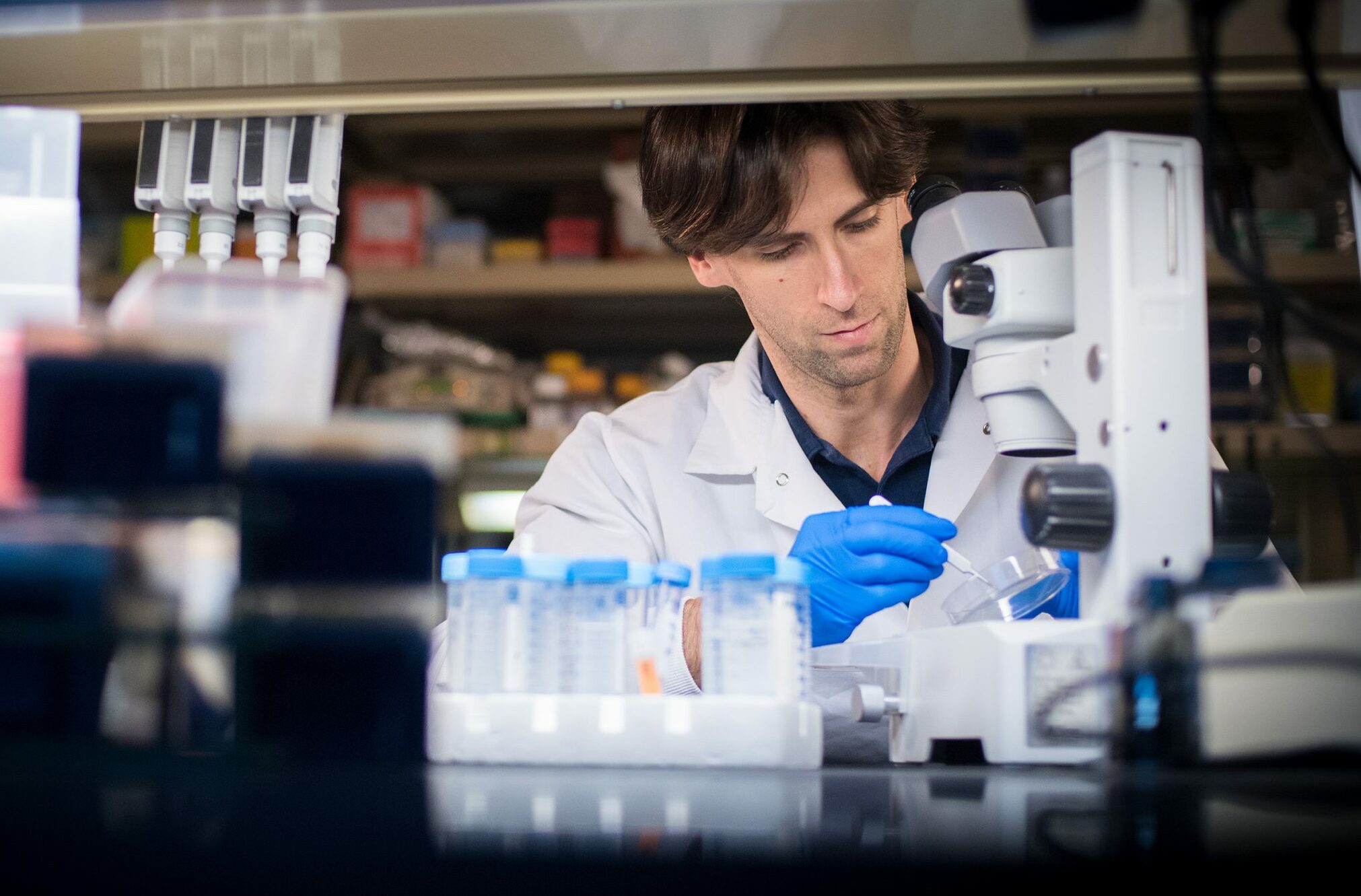Acute myeloid leukaemia

What is acute myeloid leukaemia (AML)?
Acute myeloid leukaemia (AML) is a type of leukaemia and therefore a type of blood cancer. The word ‘acute’ in the name indicates that the disease progresses very quickly. The word myeloid refers to the type of blood cells affected – the myeloid cells. AML is the most common form of acute leukaemia in adults. AML is predominately diagnosed in adults, most common in those over 60 years of age. Children can also be diagnosed with AML.
Acute myeloid leukaemia (AML) symptoms
Signs and symptoms of acute myeloid leukaemia* are likely to develop more quickly and can include:
- Fatigue
- Pale skin
- Frequent infections
- Shortness of breath
- Unexplained weight loss
- Bruising and bleeding easily
- Bone pain
Signs of AML are often similar to symptoms experienced in the main types of leukaemia. If you’re experiencing one or more of these symptoms, it’s very important that you see your GP and ask for a blood test. If your symptoms are a type of leukaemia, early detection can significantly improve the success rate of your treatment and recovery.
Facts about acute myeloid leukaemia
- Almost 3,100 people are diagnosed with AML in the UK every year. That’s more than 8 people every day.
- In the UK, 42% of all cases are diagnosed in people aged 75 or over.
- Survival rates from AML are one of the lowest for all cancers with only 22% survival after 5 years.

How does AML develop?
AML develops in white blood cells called myeloid cells in the bone marrow, and often quickly moves into the blood. The bone marrow is the soft inner part of the bones, where new blood cells are produced. Every blood cell grows from a stem cell in the bone marrow. Normally, the stem cells make an early stage of the blood cell called a blast. These blasts should develop into healthy blood cells. In the case of myeloblasts, these derive from myeloid stem cells, and normally develop into fully functioning myeloid cells, platelets or red blood cells. There are several types of myeloid cells which have different functions, such as fighting viral and bacterial infections and preventing the spread of tissue damage.
This type of leukaemia, acute myeloid (AML) develops when immature myeloblasts start multiplying uncontrollably, resulting in increased numbers in the blood and bone marrow. The abnormal/immature myeloblasts could now be considered as leukaemia cells. AML can be described as having too many leukaemia cells in the bone marrow and the blood. The leukaemia cells can sometimes spread to the lymph nodes, spleen, liver, central nervous system (brain and spinal cord) and other organs. In addition, excessive numbers of myeloblasts or leukaemia cells begin to accumulate in the bone marrow, preventing it from producing other healthy blood cells.
In AML, the bone marrow may also make abnormal red blood cells and platelets. The number of these abnormal cells increases rapidly, and the abnormal (leukaemia) cells begin to crowd out the normal white blood cells, red blood cells and platelets that the body needs.
AML occurs when a myeloid cell develops changes (mutations) in its DNA. A cell’s DNA controls how cells develop, function and die. Normally, the DNA tells the cell to grow at a set rate and to die at a set time. In ALL, the mutations result in the leukaemia cells continuing to grow and divide without any of the normal control.
Types of acute myeloid leukaemia
Most subtypes of AML are classified based on how mature (developed) the leukaemia cells are at the time of diagnosis, how different they are from normal cells based on their appearance under a microscope, and information of any genetic changes to the DNA in the AML cells.
One subtype of AML is named acute promyelocytic leukaemia (APL). This leukaemia occurs when genes on chromosome 15 switch places with some genes on chromosome 17 and an abnormal gene called PML-RARA is made. The PML-RARA gene sends a message that stops promyelocytes (a type of white blood cell) from maturing. Problems with severe bleeding and blood clots are associated with APL.
Searching for answers – Leukaemia UK funded research

Dr Kostas Tzelepis: 2020 John Goldman Fellow
Kostas’ research seeks to develop a new class of drug to treat AML patients and to understand how it works.
“I lost a couple of beloved family members at a young age. Everything happened very fast and there was no therapeutic option at the time. That was the initial spark for my interest and career path towards translational research.”
Treatment for acute myeloid leukaemia
Due to the fast-developing nature of AML, immediate treatment may be required.
The most common treatments for AML are:
- Chemotherapy
- Targeted cancer drugs
- Radiotherapy
- Stem cell transplants or bone marrow transplants.
Read more about common treatments for leukaemia.
Your doctor will be able to talk you through the different treatment options for AML. They will also talk you through possible side effects and will be able to answer any further questions you have about AML.
In addition, if you have AML or another type of leukaemia, you may be able to apply for a clinical trial, which could help researchers test possible new and more effective treatments for blood cancer.
At Leukaemia UK, we firmly believe that research has the power to make a difference and truly change lives. There are a number of recent AML treatment discoveries which could help pave the way for kinder and more effective treatments.
References
Facts and statistics quoted on this page are derived from a number of sources which include: The Office of National Statistics (ONS), Cancer Research UK (CRUK), Haematological Malignancy Research Network (HMRN), Blood Cancer UK (BCUK), Lymphoma Action & Myeloma UK
*AML symptoms – Source: Cancer Research UK
**AML treatments – Source: Cancer Research UK



